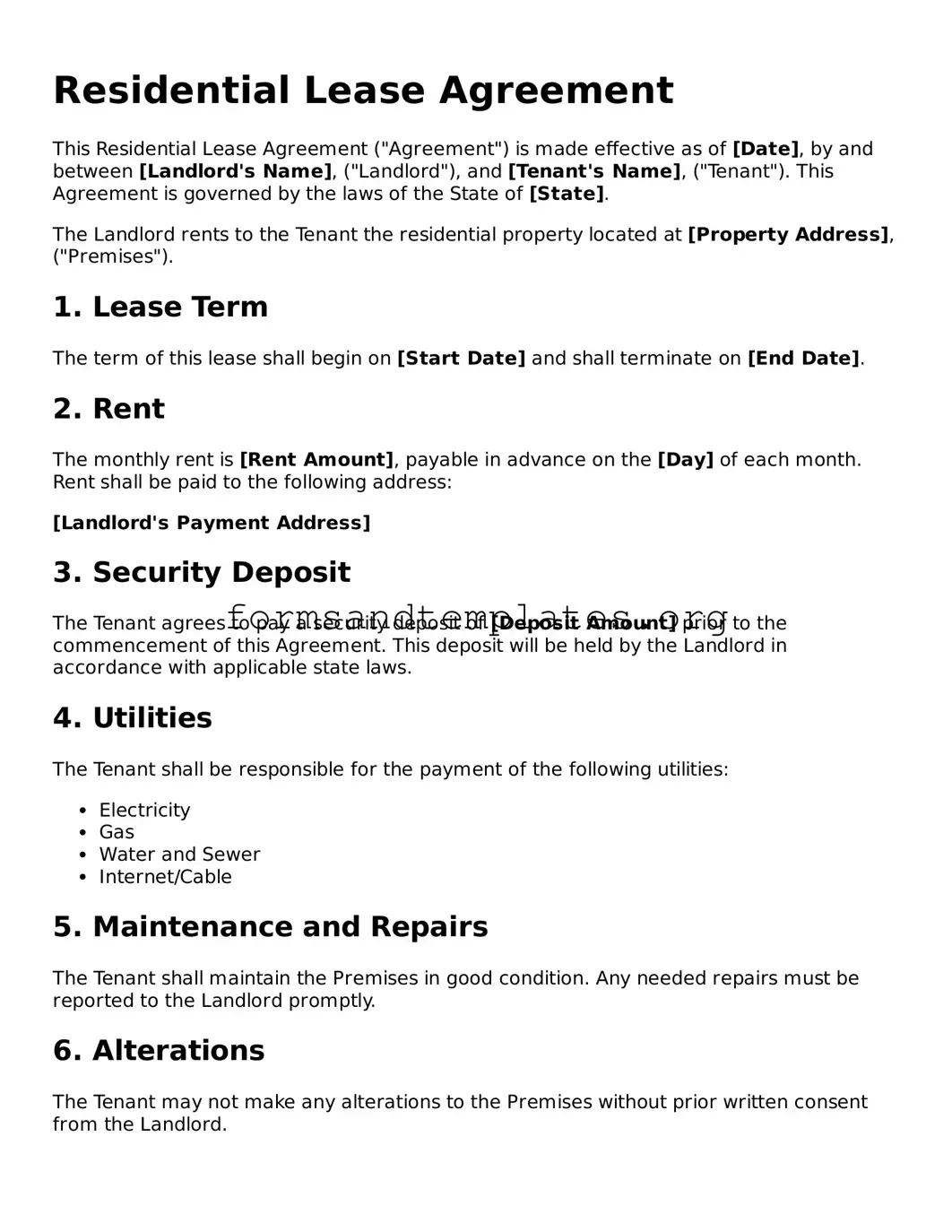Residential Lease Agreement
This Residential Lease Agreement ("Agreement") is made effective as of [Date], by and between [Landlord's Name], ("Landlord"), and [Tenant's Name], ("Tenant"). This Agreement is governed by the laws of the State of [State].
The Landlord rents to the Tenant the residential property located at [Property Address], ("Premises").
1. Lease Term
The term of this lease shall begin on [Start Date] and shall terminate on [End Date].
2. Rent
The monthly rent is [Rent Amount], payable in advance on the [Day] of each month. Rent shall be paid to the following address:
[Landlord's Payment Address]
3. Security Deposit
The Tenant agrees to pay a security deposit of [Deposit Amount] prior to the commencement of this Agreement. This deposit will be held by the Landlord in accordance with applicable state laws.
4. Utilities
The Tenant shall be responsible for the payment of the following utilities:
- Electricity
- Gas
- Water and Sewer
- Internet/Cable
5. Maintenance and Repairs
The Tenant shall maintain the Premises in good condition. Any needed repairs must be reported to the Landlord promptly.
6. Alterations
The Tenant may not make any alterations to the Premises without prior written consent from the Landlord.
7. Pets
Pets are allowed/not allowed (select one). If allowed, the Tenant must comply with additional pet policies outlined by the Landlord.
8. Governing Law
This Agreement shall be governed by the laws of the State of [State], including local laws, where applicable.
9. Signatures
Please indicate your acceptance of this Agreement by signing below:
_________________________
Landlord's Signature
_________________________
Tenant's Signature
Date: _______________
